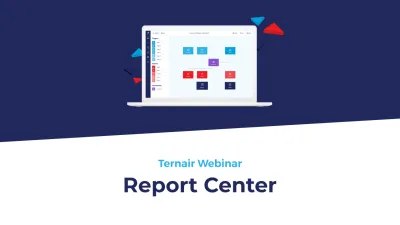Why omnichannel marketing?
With omnichannel marketing, you build a better relationship with your customer. Customers are bombarded daily with messages from all kinds of companies and organizations. This makes them selective in who they like to stay in touch with. With omnichannel marketing, you show customers that you understand them. You increase engagement, thereby reaping three key benefits:
Up to 30 percent more sales
Customers buy from providers with whom they experience engagement. Once you prove that you understand the customer, you lower the barrier to purchase. That results in an average of 30% more sales.
More returning customers
Involvement leads to more loyalty. Thanks to omnichannel engagement, you increase the percentage of returning customers. Those returning customers account for as much as 40 percent of sales on average.
More insight into the customer journey
More insight into the customer journey. Thanks to the data on the various touchpoints during a customer journey, you map out ever more clearly at which points and moments you win the hearts of customers and where there is still room for improvement.
Omnichannel marketing strategy
A good omnichannel marketing strategy combines three key components:
A good omnichannel marketing strategy creates a stronger relationship with your customer. To do so, you use relationship data and customer preferences to use the right "trigger" at the right time. That automation ensures that you share the desired information or offer the experience at every touchpoint.
Omnichannel marketing software
"If all you have is a hammer, every problem is a nail." Psychologist Maslow saw that any kind of pigeonholing or framing leads to more of the same solution. A bigger, smarter hammer is the result. If you can't think outside your current toolbox, your solution remains limited.
The same is true for marketers' toolbox. If your email channel, persona or current audience segmentation is your truth, then that may be manageable, but it limits your ability to get more out of your market.
Omnichannel marketing platform
An omnichannel marketing platform ensures that touchpoints within the customer journey are brought together, can be continuously transformed into dynamic segments and activated across all channels. The omnichannel platform provides opportunities to address customers at the stage they are in. The collection of all those signals and opportunities to create experiences provides the overview to communicate the most valuable message at the right time.
Omnichannel marketing for Retail
With omnichannel in Retail you combine communication through channels such as the web shop for product information and ordering, the store for pickup, email for billing and customer service for return processes. Instead of separate processes, you can align all these customer data integrally. For example, you take into account discount offers, other recent customer contact and reviews. In this way, you put the customer at the center of Retail, based on an omnichannel marketing strategy that creates a better customer experience.
Omnichannel marketing for Financial Services
The financial services is shifting from a product focus to a customer-centric approach. Starting from customer needs, preferences and customer characteristics, we look at which product fits best and how it can be offered. This can be an insurance or investment product, but also a collection platform, a payment method or installment plan.
Omnichannel marketing for events, fairs, congresses, training
Fair and event organizers recruit visitors and exhibitors through all channels over several months. Based on specific interests on different channels, visitors are triggered, trade show programs sharpened and new exhibitors are encouraged to be present with their offerings. Contacts between both target groups are established prior to the trade show/event via apps; specific offers are communicated by email and social media to registered visitors. During trade show and event days, relevant information is distributed 1-to-1 via app and SMS based on the exact location of visitors. In this way, relevant experiences and encounters are created. Afterwards, contacts and networks are established and maintained. All channels, content and target groups are optimally used and connected. Superfluous communication can be skipped, allowing contact pressure to be used optimally.
Omnichannel marketing at Ternair
With Ternair you deploy omnichannel marketing for any sector. Ternair combines the ability to combine all data with CDP (Customer Data Platform) functionality to supplement, transform and hyper-segment this data. The platform then activates the data through built-in and connected channels, where your (first-party) customer data and content is flexibly connected on a per-customer basis.
Our approach
Our software avoids the need to first build a central database of customer data. Instead, our solution integrates with existing sources. Thanks to smart synchronization, you thus avoid strain on IT and data processes, long waiting times and incorrect assumptions in data models.
With our campaign management tool you can perform real-time 1-to-1 hypersegmentation without technical knowledge. This is how we make our omnichannel marketing software available to all users. Of course, our specialists are available to guide teams looking for support in setting up their omnichannel marketing or configuring web services and creating your content templates. You can do it all yourself, but you can also let us do it.
FAQ: frequently asked questions about omnichannel marketing
What is the origin of omnichannel marketing?
Omnichannel marketing emerged as a response to the increasing multimedia behavior of customers. The use of online and offline resources is increasingly intertwined, and the increasing number of channels, in addition to all advertising and incentives, requires a unified approach to the customer.
What does omnichannel marketing cost?
The cost of omnichannel marketing depends heavily on the number of channels and data sources that are combined. With 30% extra turnover on average and more loyal customers accounting for 40% of sales, the investment normally pays for itself.
What are the benefits of omnichannel marketing?
Omnichannel marketing is the optimal communication strategy that both strengthens the relationship with customers and maximizes your chances of conversion, thanks to aligned communication across all available channels. In addition, you get much better insight into (the touchpoint during) the customer journey and your channels, allowing you to gradually optimize your channels and proposition.





